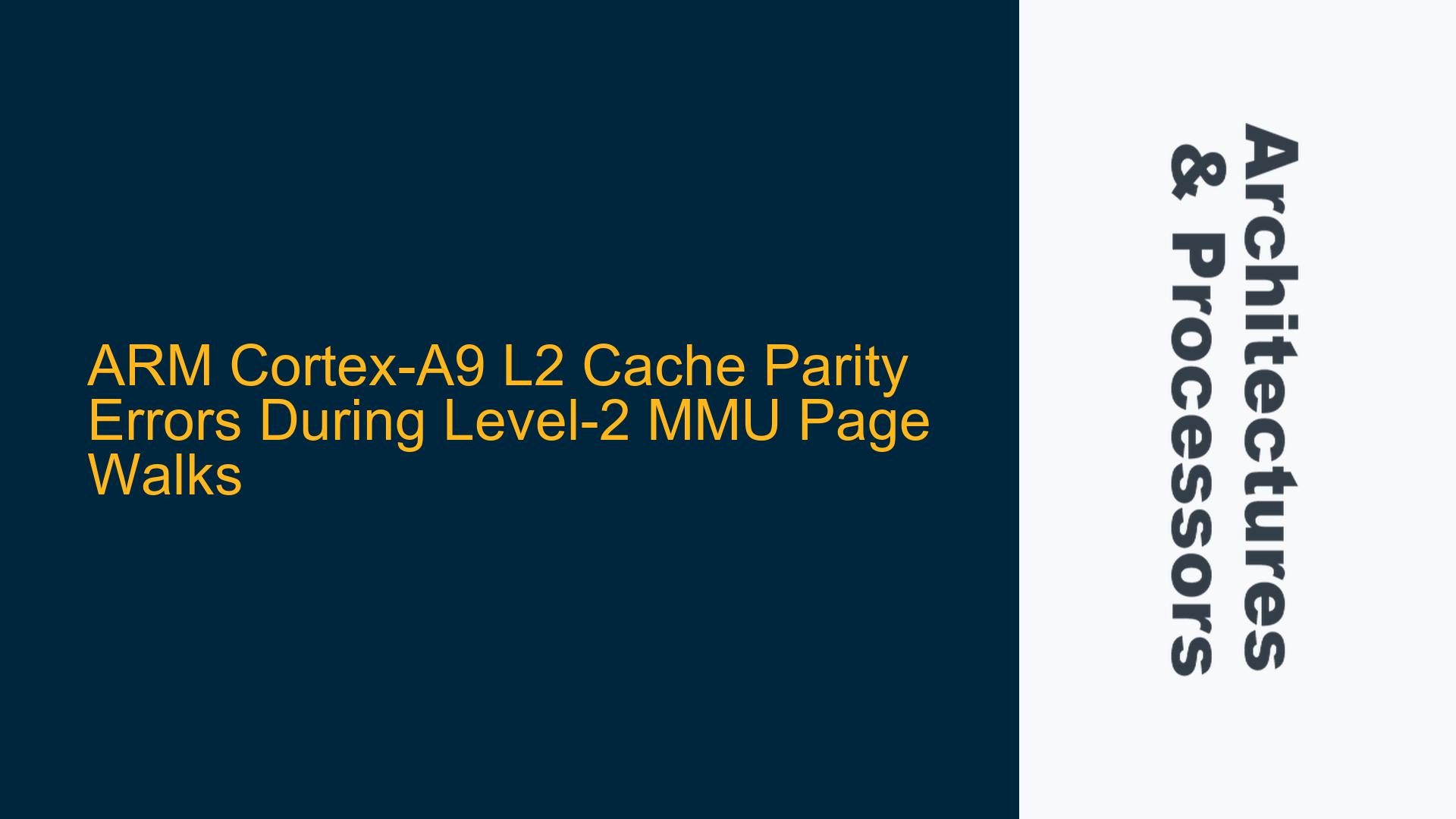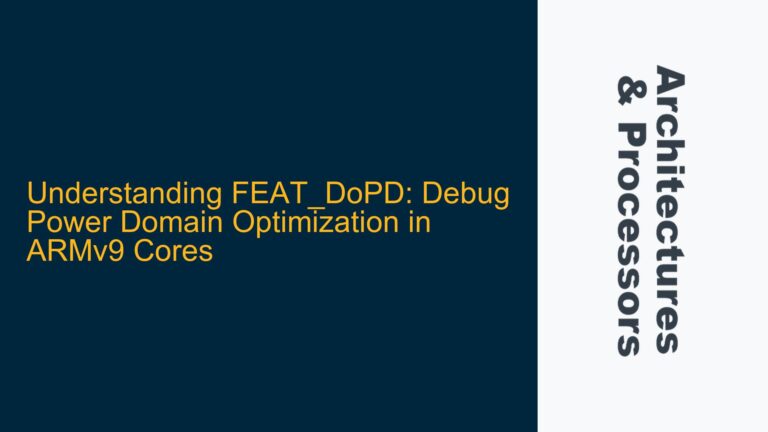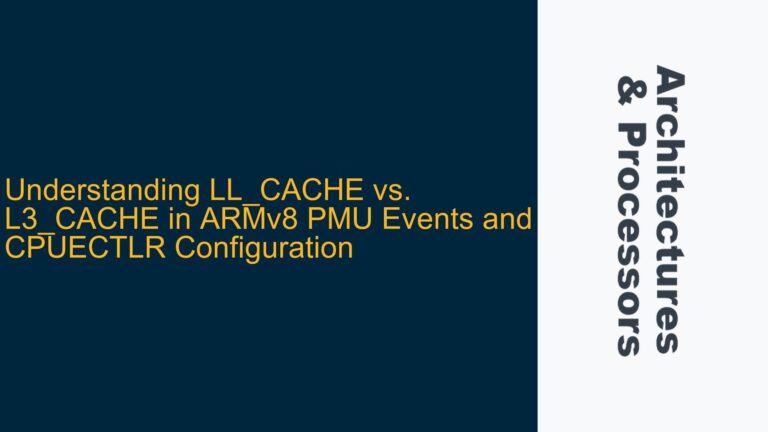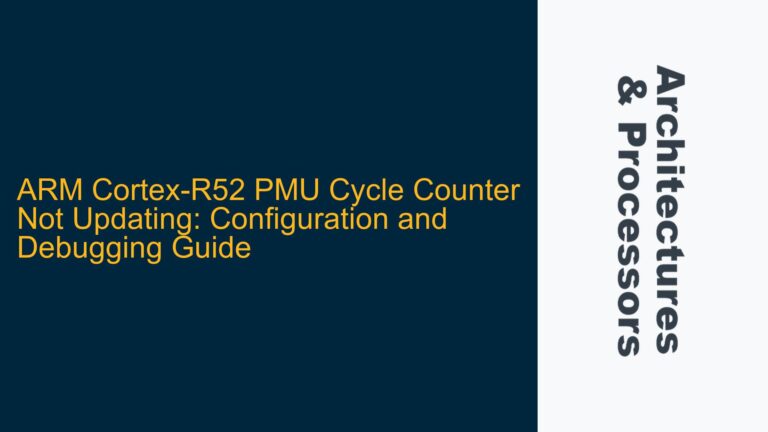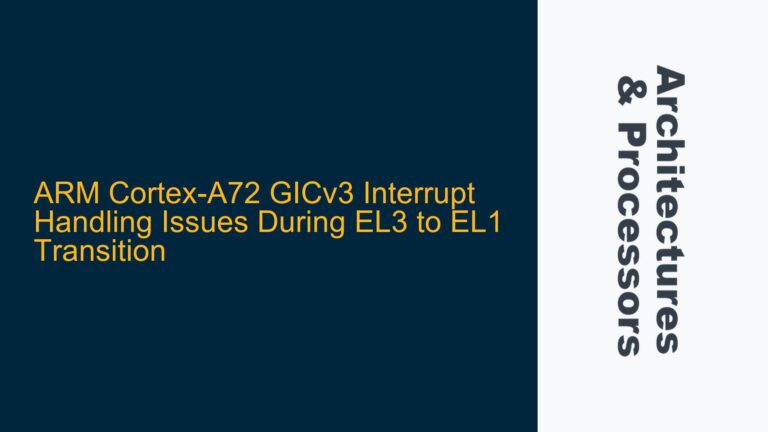ARM Cortex-A9 L2 Cache Parity Errors During Level-2 MMU Page Walks
The ARM Cortex-A9 processor, integrated with an ARM PL310 L2 cache controller, is a widely used architecture in embedded systems. However, a critical issue arises when dealing with L2 cache parity errors during Level-2 MMU page walks. This issue manifests as synchronous aborts triggered by L2 cache parity errors, specifically during the fetching of Level-2 MMU table entries. The problem is exacerbated when the L2 cache controller reports a L1 tag RAM parity error, leading to repeated data aborts unless the entire L2 cache is invalidated. This behavior suggests that the hardware page walk mechanism is caching more data than expected, potentially due to prefetching or TLB invalidation.
The core of the issue lies in understanding what data is cached during the Level-2 MMU page walk and how to effectively manage cache invalidation to mitigate parity errors. The problem is further complicated by the need to identify which cache lines are dirty at the time of the exception, as this information is crucial for targeted cache management. Without a clear understanding of these mechanisms, developers may resort to brute-force approaches like invalidating the entire L2 cache, which, while effective, is inefficient and can lead to performance degradation.
Memory Barrier Omission and Cache Invalidation Timing
One of the primary causes of L2 cache parity errors during Level-2 MMU page walks is the omission of memory barriers and improper cache invalidation timing. Memory barriers are essential for ensuring that memory operations are completed in the correct order, especially in multi-core systems where cache coherency is critical. In the context of the Cortex-A9 and PL310 L2 cache controller, the absence of memory barriers can lead to scenarios where cache lines are modified or accessed out of sequence, resulting in parity errors.
Another significant factor is the timing of cache invalidation. When the Level-2 MMU table is modified, it is crucial to invalidate the corresponding cache lines before the next access. However, if the invalidation is not performed at the right time, the cache may still hold stale or incorrect data, leading to parity errors. This is particularly relevant when dealing with Level-2 MMU table entries, as these entries are critical for the correct translation of virtual to physical addresses.
The interaction between the Cortex-A9 and the PL310 L2 cache controller also plays a role in this issue. The PL310 controller is responsible for managing the L2 cache, including cache line fills, evictions, and parity checks. If the controller is not properly configured or if there are timing mismatches between the processor and the cache controller, it can lead to situations where cache lines are filled with incorrect data, resulting in parity errors.
Additionally, the Cortex-A9’s prefetching mechanism can exacerbate the issue. The processor may prefetch data into the L2 cache during a page walk, even if that data is not immediately needed. If the prefetched data contains errors (due to parity issues), it can trigger a parity error when accessed. This behavior is particularly problematic when the prefetching mechanism is not properly managed or when the cache is not invalidated before the next access.
Implementing Data Synchronization Barriers and Cache Management
To address the issue of L2 cache parity errors during Level-2 MMU page walks, a comprehensive approach involving data synchronization barriers and precise cache management is required. The first step is to ensure that memory barriers are correctly implemented to maintain cache coherency. This involves inserting Data Synchronization Barriers (DSBs) and Data Memory Barriers (DMBs) at appropriate points in the code to ensure that memory operations are completed in the correct order. For example, after modifying the Level-2 MMU table, a DSB should be used to ensure that all previous memory operations are completed before proceeding.
Next, it is crucial to implement precise cache invalidation. Instead of invalidating the entire L2 cache, which can be inefficient, targeted invalidation of specific cache lines should be performed. This can be achieved by using the MCR instruction to invalidate specific cache lines associated with the Level-2 MMU table. The MCR instruction allows for precise control over cache operations, enabling developers to invalidate only the necessary cache lines without affecting the rest of the cache.
In addition to cache invalidation, it is important to manage the PL310 L2 cache controller’s configuration to prevent parity errors. This includes ensuring that the cache controller is properly initialized and that the parity check mechanism is correctly enabled. The PL310 controller provides several configuration options, including the ability to enable or disable parity checks for specific cache regions. By carefully configuring these options, developers can reduce the likelihood of parity errors occurring during page walks.
Another critical aspect is the management of the Cortex-A9’s prefetching mechanism. To prevent prefetching from exacerbating parity errors, developers can use the PLD (Preload Data) instruction to control when data is prefetched into the cache. By strategically placing PLD instructions in the code, developers can ensure that data is only prefetched when necessary, reducing the risk of prefetching incorrect data.
Finally, it is essential to monitor the state of the L2 cache during runtime to identify which cache lines are dirty at the time of an exception. This can be achieved by using the PL310 controller’s diagnostic features, which provide information about the state of the cache, including which cache lines are dirty. By leveraging this information, developers can implement more targeted cache management strategies, reducing the need for brute-force cache invalidation.
In conclusion, addressing L2 cache parity errors during Level-2 MMU page walks on the ARM Cortex-A9 requires a combination of memory barriers, precise cache invalidation, careful configuration of the PL310 L2 cache controller, and strategic management of the Cortex-A9’s prefetching mechanism. By implementing these strategies, developers can mitigate parity errors and ensure the reliable operation of their embedded systems.
